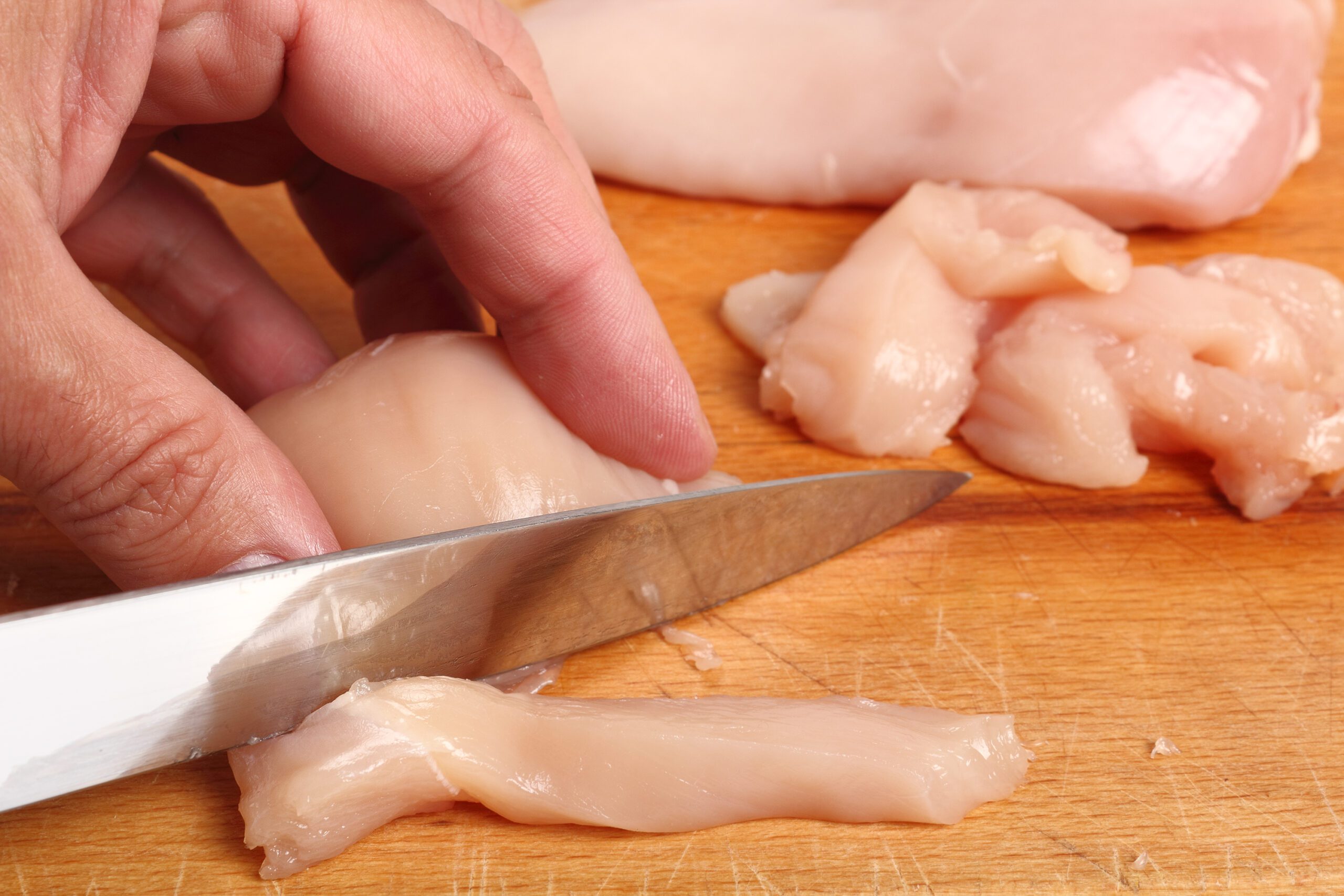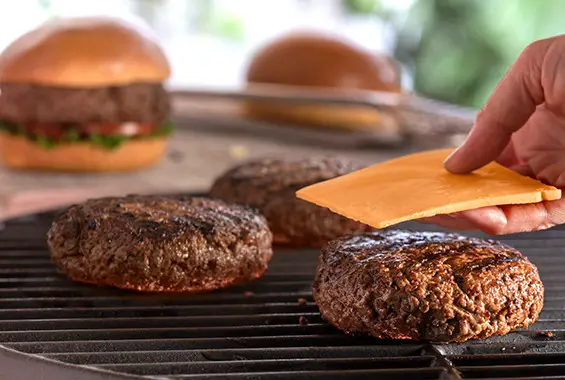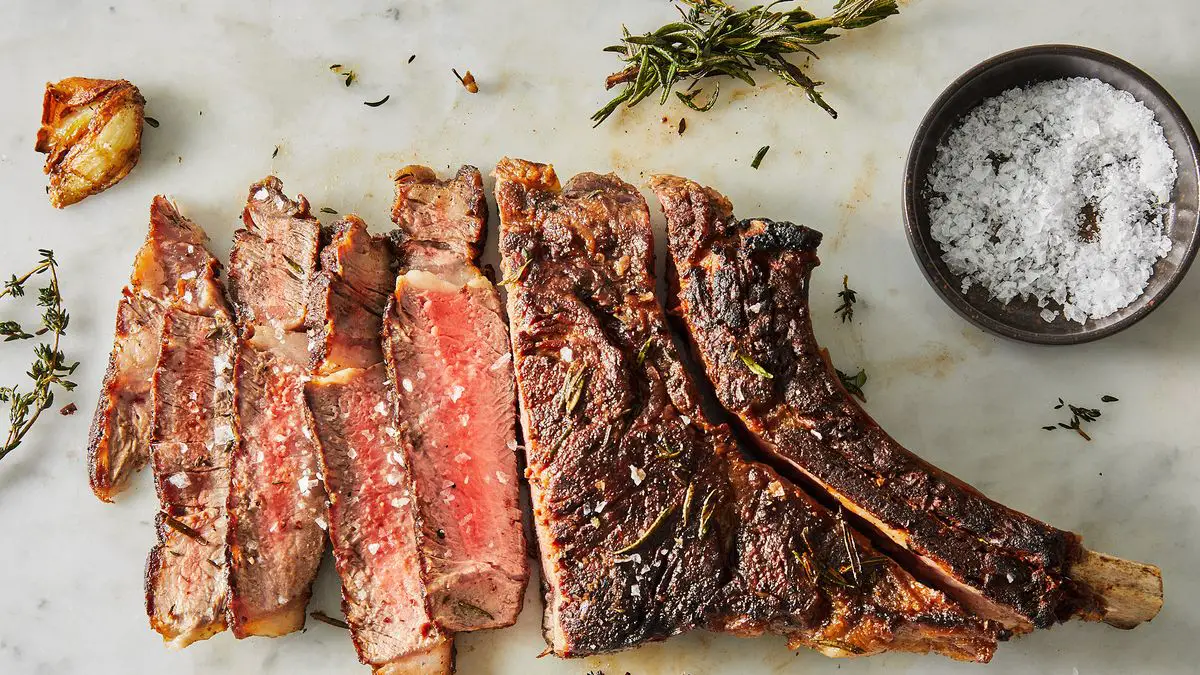
“Ribeye Steak vs New York Strip: A sizzling showdown between two iconic cuts of beef. Explore the subtle differences in taste, tenderness, and marbling that set these mouthwatering steaks apart. Discover which cut reigns supreme on your plate and elevate your steak game to new heights.”
New York Strip vs Ribeye Steak: What’s the Difference?
When it comes to choosing between a New York Strip and a Ribeye steak, there are a few key differences to consider. The New York Strip is known for being less tender and less rich compared to the Ribeye. Additionally, these cuts come from different parts of the cow, with the New York Strip sourced from the loin and the Ribeye coming from the upper rib.
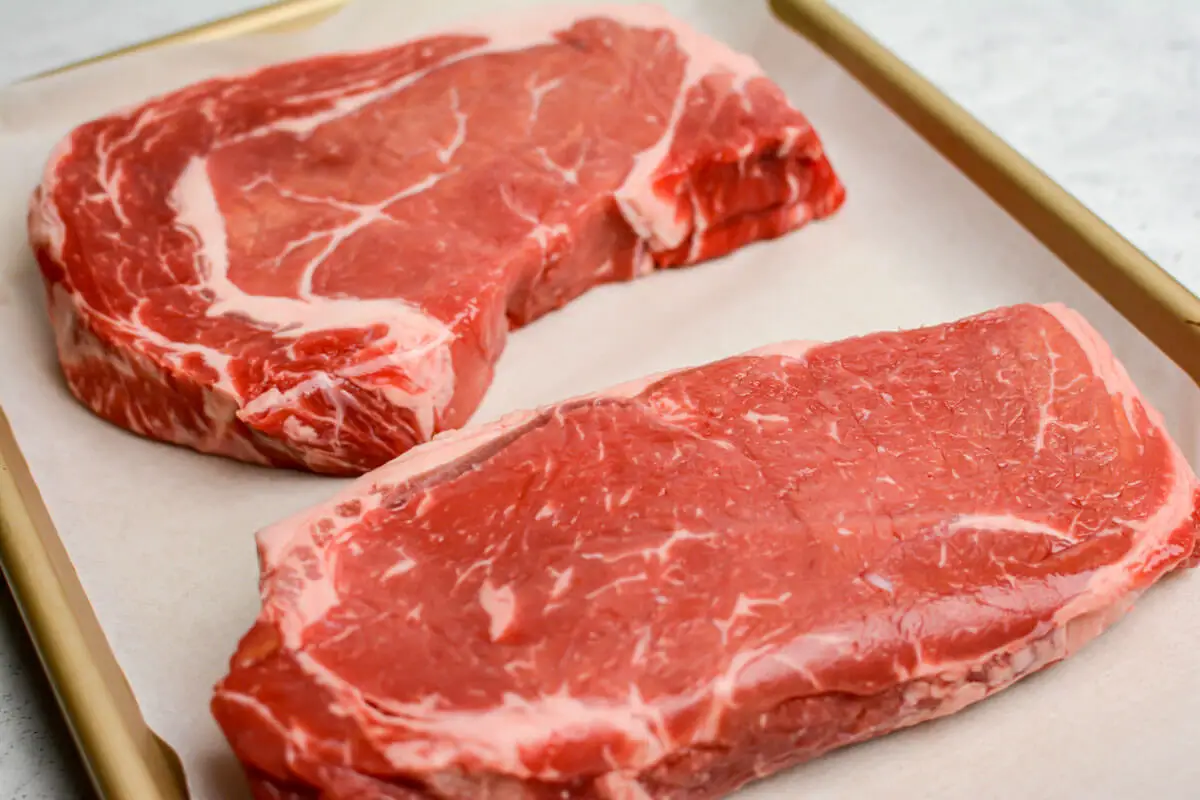
However, despite their differences in tenderness and richness, both cuts actually contain a sub-unit of the same muscle called the longissimus dorsi. This muscle is responsible for most of the meatiness in both steaks. The marbling or intramuscular fat found in this specific muscle determines beef grades like “Prime,” “Choice,” and “Select.” Surrounding this muscle are other muscles like spinalis dorsi, complexus, and longissimus costarum.
The main reason for the difference in tenderness between these cuts is due to their location on the cow. The meat sourced from the upper rib, where the Ribeye comes from, is less used for movement and therefore more tender. On the other hand, the New York Strip, which comes from the loin near the rear of the cow, is used more for movement and is thus less tender.
Understanding Muscle Composition of New York Strip and Ribeye Steaks
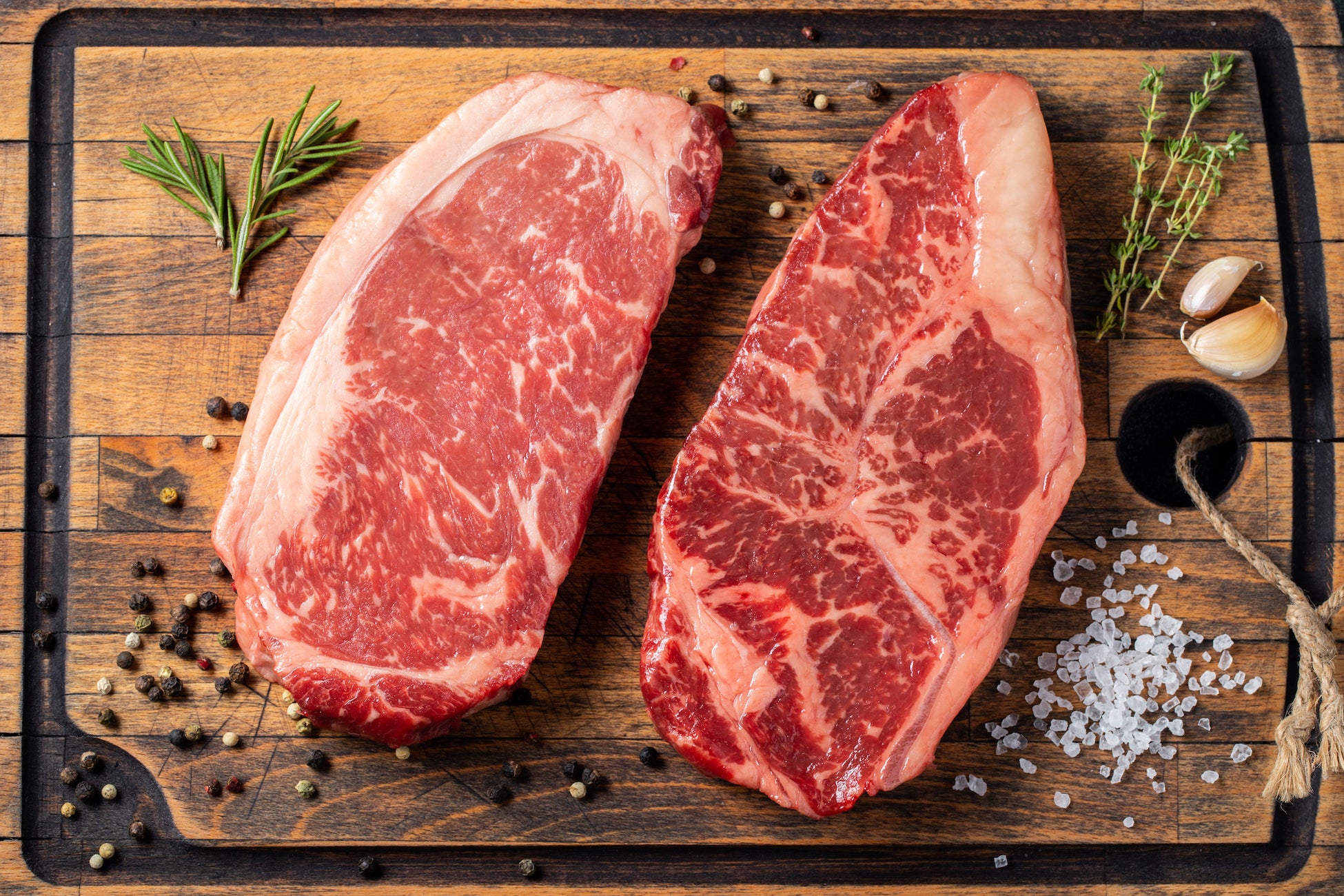
The main muscle found in both New York Strip and Ribeye steaks is the longissimus dorsi. This muscle is responsible for the meatiness of the steaks. The marbling, or intramuscular fat, found in this specific muscle determines the beef grades like “Prime, Choice, and Select”. Surrounding the longissimus dorsi are other muscles such as the spinalis dorsi, complexus, and longissimus costarum.
The musculature that comprises these steaks is essentially the same. However, where these cuts come from on the cow affects their tenderness. The ribeye steak comes from the upper rib of the cow, which is less used for movement and therefore more tender. On the other hand, the New York strip comes from the loin near the rear, which is used by the cow for flexing its vertebral column and thus less tender than the ribeye.
The Longissimus Dorsi Muscle
The longissimus dorsi muscle is a sub-unit of both the New York Strip and Ribeye steaks. It is the main muscle that comprises these cuts of steak. This muscle is responsible for flexing the vertebral column and is used more by the cow in the case of the New York Strip. As a result, the New York Strip is less tender compared to the Ribeye steak.
The marbling, which refers to intramuscular fat, found in the longissimus dorsi muscle determines beef grades such as Prime, Choice, and Select. Ribeye steaks contain an “eye” muscle that has high marbling, making it more tender and rich in flavor. On the other hand, New York Strip steaks have less marbling and are therefore less tender.
What is a Ribeye Steak?
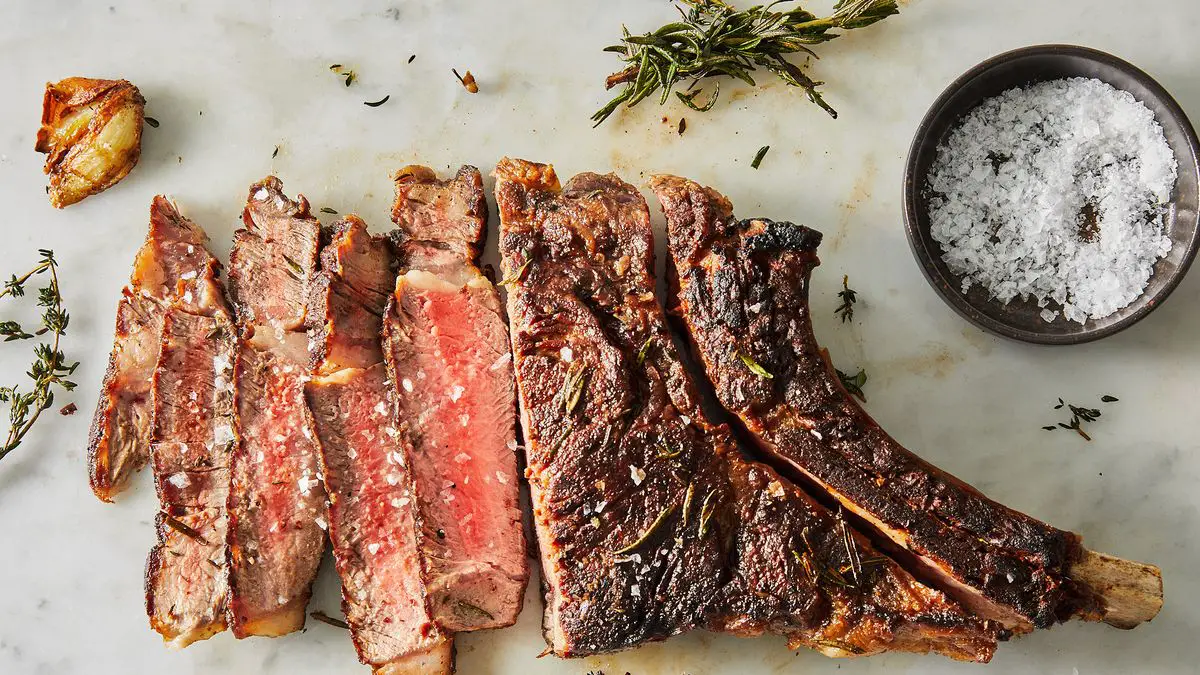
A ribeye steak is a popular cut of beef that comes from the rib primal of the cow. Specifically, it is taken from ribs 6 through 12. The rib primal is located in the upper rib section of the cow and is separated from the chuck primal at the 5th and 6th rib, as well as from the loin primal at the 12th and 13th rib.
The main muscle found in a ribeye steak is called the longissimus dorsi, which is also known as the “eye” muscle. This muscle provides the meatiest portion of the entire steak. Surrounding this muscle are other muscles such as the spinalis dorsi, complexus, and longissimus costarum.
Ribeye steaks are known for their tenderness and rich flavor due to their higher intramuscular fat content. The marbling found in this specific muscle contributes to its quality grade, with beef grades like “Prime, Choice, and Select” being based on this marbling. Different cuts can be made from the muscles that comprise a ribeye steak, such as ribeye filets or ribeye cap roll.
What is New York (NY) Strip Steak?
New York strip steak, also known as NY strip or strip loin, is a popular cut of beef that comes from the short loin sub-primal. It is sourced from the rear of the cow and is known for its tenderness and rich flavor. The NY strip steak is characterized by its lean yet well-marbled texture, making it a favorite among steak lovers.
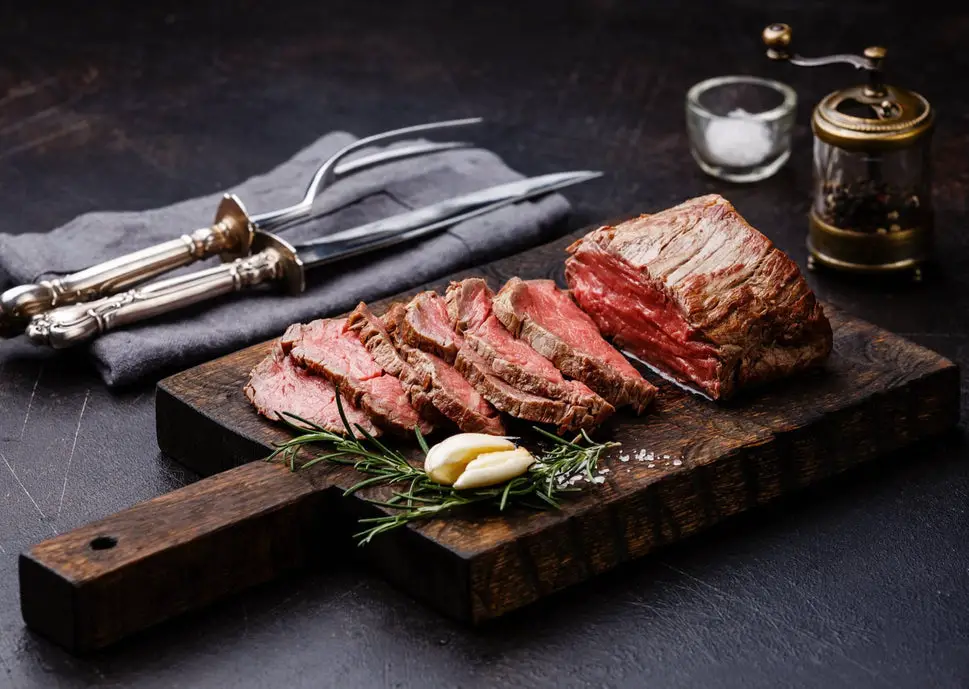
When the muscle is left “bone-in,” it is referred to as a T-bone or porterhouse steak, with the respective name based on the size of the tenderloin muscle. This cut offers a perfect balance of tenderness and flavor, making it an excellent choice for grilling or pan-searing.
The NY strip steak is often slightly cheaper per pound compared to ribeye steak but still offers great taste and quality. It can be enjoyed on its own or accompanied by sauces and seasonings to enhance its natural flavors.
Difference in Price
In terms of price, the New York Strip and Ribeye steaks are usually not much different. However, if you see both cuts next to each other at a meat case, the NY Strip will typically be slightly cheaper per pound than the ribeye. This is because there is usually less demand for the NY Strip compared to the more desirable and tender Ribeye steak.
When it comes to beef fabrication, butchers will pull roughly the same number of steaks from each carcass. However, since there is less of the ribeye muscle on a cow compared to the NY Strip, the price per pound for ribeye steaks tends to be higher. The rich flavor and tenderness of ribeye steaks also contribute to their higher price compared to NY Strip steaks.
Difference in Taste
The Ribeye steak is known for its rich and tender texture. It contains more intramuscular fat, also known as marbling, which adds to its flavor and juiciness. The higher fat content gives the Ribeye a buttery and melt-in-your-mouth quality.
On the other hand, the New York Strip steak has a slightly leaner profile compared to the Ribeye. While it may be less tender than the Ribeye, it offers a more robust and beefy flavor. The NY Strip is often described as having a firmer texture with a satisfying chewiness.
Difference in Tenderness
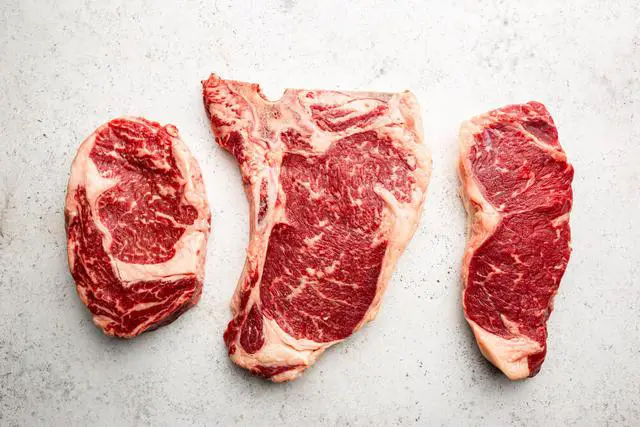
The main difference between the New York Strip and the Ribeye steak is their tenderness. The Ribeye steak, sourced from the upper rib of the cow, is more tender than the New York Strip, which comes from the loin near the rear. The Ribeye steak contains an “eye” muscle called the longissimus dorsi, which is known for its tenderness. On the other hand, the New York Strip also contains this muscle but is less tender due to its location and use in flexing the vertebral column.
The location of these cuts on the cow plays a significant role in their tenderness. The further a muscle is from the hooves of the cow, the more tender it tends to be. As a result, cuts sourced from less-used muscles like those in the rib primal are typically more tender. The NY Strip, being used by the cow to flex its vertebral column, is less tender compared to cuts sourced from less-used muscles.
In terms of price per pound, NY Strip and Ribeye steaks are usually similar. However, due to factors such as desirability and tenderness, Ribeye steaks may be slightly more expensive than NY Strip steaks. The rich flavor and higher marbling (intramuscular fat) found in Ribeye steaks contribute to their higher price per pound compared to NY Strip steaks.
In conclusion, both ribeye steak and New York strip offer distinct flavors and textures that cater to different preferences. While the ribeye boasts rich marbling and tenderness, the New York strip offers a leaner and firmer bite. Ultimately, the choice between these cuts depends on personal taste and desired dining experience.
Learn More About Grilling
If you want to learn more about grilling, check out these other helpful resources!

